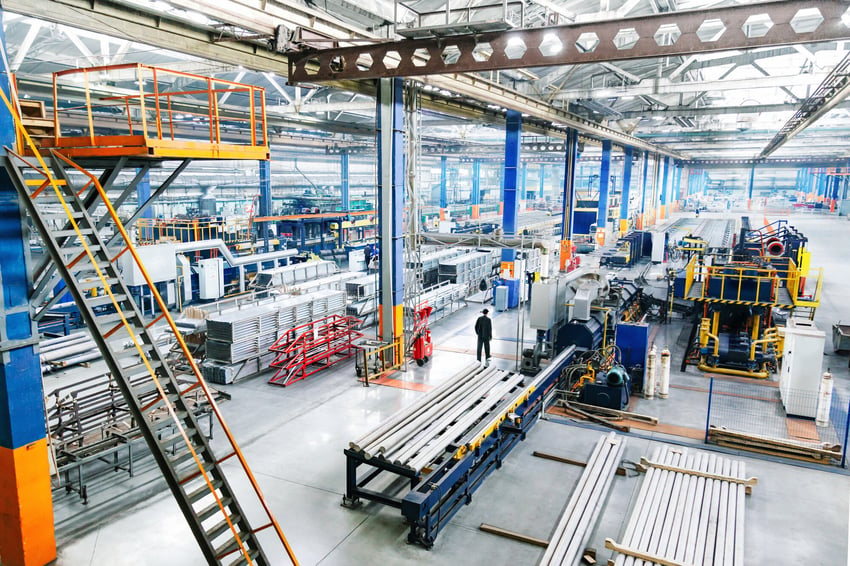The Manufacturing Labor Shortage Shift

A quietness has spread throughout the manufacturing industries. A quiet born not of inactivity but of unfilled positions. The manufacturing labor shortage has become a lingering and focal challenge for many businesses.
And this isn’t just a fleeting trend. It is a structural shift, a demographic wave colliding with evolving skill demands. Baby boomers are retiring, taking with them a wealth of experience, while younger generations are leaning toward less physically demanding careers.
Once a cornerstone of the American economy, manufacturing is facing an image problem. Perceived by many as outdated, physically demanding, and lacking in career advancement opportunities. This perception, while often inaccurate, continues to be a hurdle for many businesses; however, the labor shortage is now showing signs of a nuanced shift.
Is the labor shortage finally easing up?
Let’s consider the data: while the manufacturing workforce has faced significant challenges, recent indicators suggest a moderation of the severe shortages seen in previous years.
According to the National Association of Manufacturers (NAM), while attracting and retaining a quality workforce remains a concern, it has moved down the priority list, now ranking as the fourth highest concern – a big shift from its continued top position since 2017. Furthermore, seven out of ten manufacturers report less than 5% of their positions being unfilled.
This isn’t to say the challenge is over just yet. Data from the Census Bureau's Quarterly Survey of Plant Capacity Utilization (QSPC) through Q3 2024 reveals that approximately 20.6% of manufacturing plants in the US still cite insufficient labor or skills as a key constraint in their production capacity. While this figure is significantly lower than the peak of 46.3% in Q3 2021, it remains double the average observed from Q1 2014 to Q4 2016, indicating a fluctuating landscape rather than a definite resolution.
A study by Deloitte and The Manufacturing Institute projected that by 2030, as many as 2.1 million manufacturing jobs could still go unfilled due to the skills gap. While hiring projections suggest a mix of growth and decline, with 32% anticipating an increase in full-time hiring and 22.1% predicting a reduction, the need for skilled labor remains a key consideration.
Automation as a natural evolution
Modern manufacturing demands more than just physical dexterity from its workforce; it requires technical proficiency, problem-solving abilities, and an understanding of complex systems. The rise of advanced manufacturing technologies, from robotics to artificial intelligence, has transformed the industry.
Automation is already proving itself to be a vital support with labor shortages. It’s not about replacing human workers but rather augmenting their capabilities and filling the gaps where labor challenges persist.
Look around any modern manufacturing facility, and you’ll likely see robots performing repetitive tasks, automated guided vehicles (AGVs) transporting materials, and sophisticated systems optimizing production processes. This transition is not about eliminating jobs but redefining them. It’s about shifting the focus from manual labor to higher-value tasks that require creativity and critical thinking.
MasterMover AGV Tugger in action at Toyota Manufacturing plant
Advanced AGV tuggers are a prime example. By streamlining material handling and taking on the repetitive low-value activities, automated guided vehicles significantly reduce the physical strain on workers whilst boosting efficiency. By freeing up manpower for more complex value-adding tasks and integrating seamlessly into existing workflows, AGVs are increasing throughput as well as empowering existing staff, significantly easing labor shortage challenges.
Investing in training for workers to be able to collaborate with machines effectively is essential. Executive Director of the Manufacturing Institute, Carolyn Lee, explains that “companies must prioritize technology, training and talent development, and the investments that are driving growth will also require the industry to build out a talent ecosystem. With investments in partnerships, apprenticeships and education, and prioritizing a more diverse and inclusive workforce, a whole host of new talent will be on the factory floor and driving the next wave of growth.”
Automation allows businesses to improve consistency and productivity in the face of widespread labor shortages. Manufacturers are able to meet the growing demands of a global market while maintaining high standards of quality. Furthermore, it is creating safer work environments by minimizing the risk of injuries and errors. A vital support during labor shortages, automation is blending human expertise with technological innovation to keep the manufacturing industry moving.
What does the future of manufacturing hold?
The question of whether the manufacturing labor shortage is receding is not easily answered with a simple yes or no. The landscape is nuanced; marked by an apparent easing of the pressures experienced in recent years yet still punctuated by persistent challenges.
In essence, the data paints a picture of a labor market in transition. While the acute shortages that plagued manufacturers in recent years appear to be moderating, the need for skilled labor remains a critical consideration. Manufacturers must remain vigilant and adaptable, continuing to invest in workforce development, training, and automation solutions to mitigate the immediate labor shortfalls as well as equipping the next generation workforce.
The labor challenges have not disappeared, but they have shifted. Manufacturers need to implement a strategic and multifaceted approach, combining automation with comprehensive training and development for staff to ensure continued growth and actively invest in the future of manufacturing skills.


